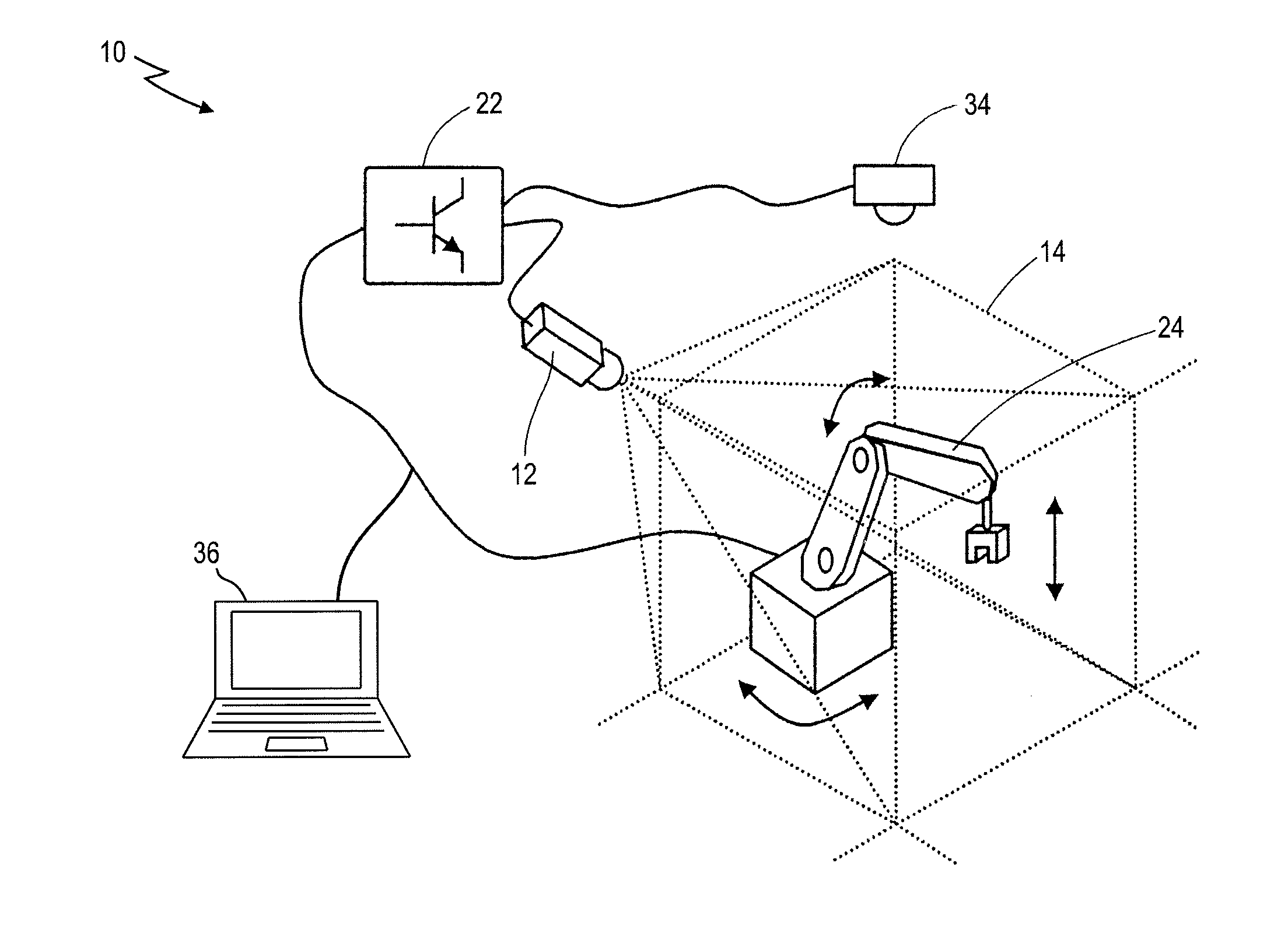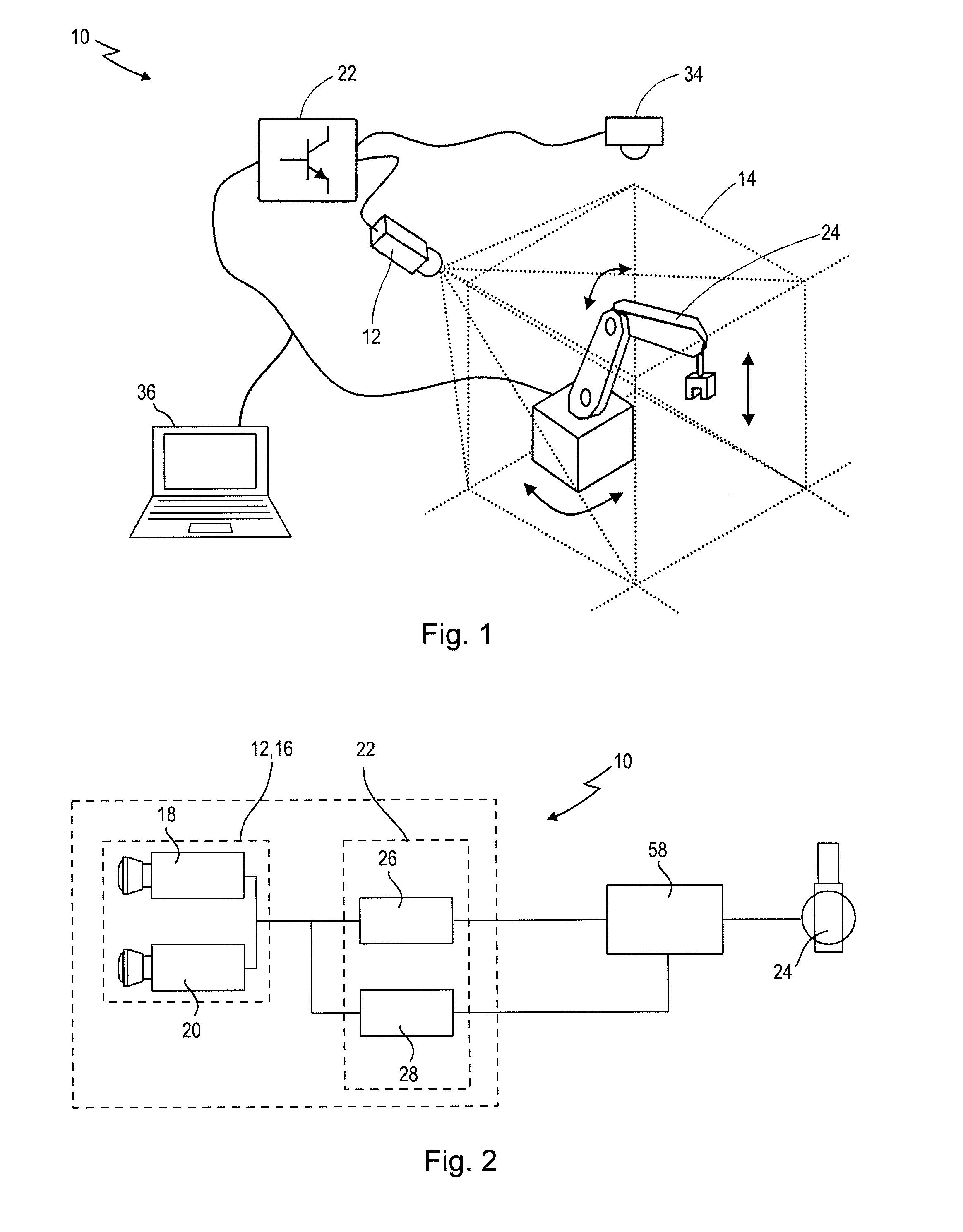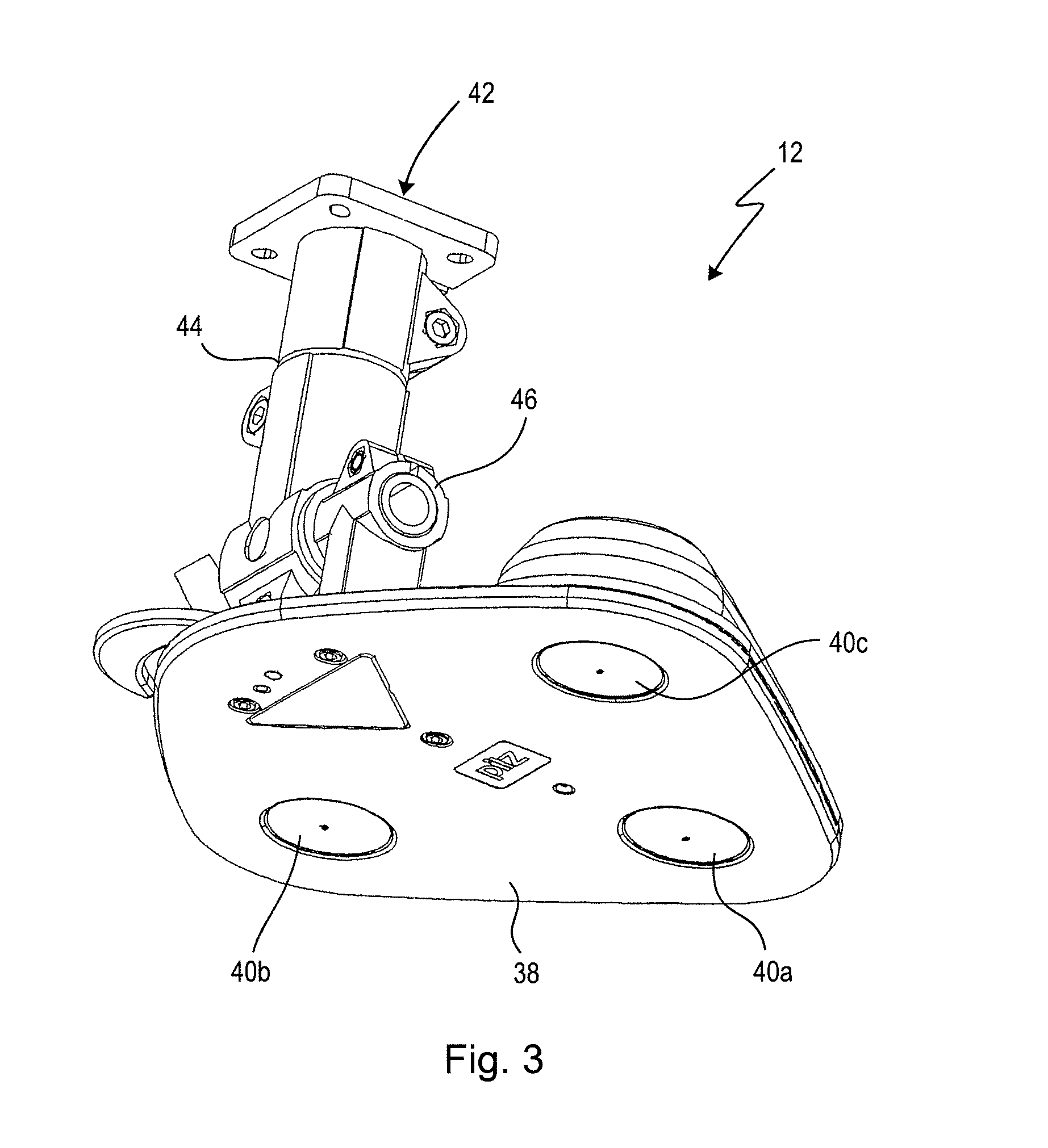Apparatus and method for safeguarding an automatically operating machine
- Summary
- Abstract
- Description
- Claims
- Application Information
AI Technical Summary
Benefits of technology
Problems solved by technology
Method used
Image
Examples
Embodiment Construction
[0070]In FIGS. 1 and 2, a preferred exemplary embodiment of the new apparatus in its entirety is denoted by the reference numeral 10.
[0071]The apparatus 10 contains at least one sensor unit 12, which is designed to monitor a spatial area or monitoring area 14 in which an automatically operating system or machine, in this case a robot 24, is disposed. For this purpose, the sensor unit 12 preferably comprises a camera system 16 that is oriented towards the monitoring area 14. The camera system 16 is preferably configured in the form of a stereo camera system comprising at least a first camera 18 and a second camera 20. The cameras 18, 20 provide two slightly mutually offset images of the monitoring area to be safeguarded 14. Because of the offset of the cameras 18, 20 relative to each other and using trigonometric relationships, the distance from the sensor unit 12 to objects in the monitoring area 14 can be determined using the camera images. A preferred sensor unit of this type is d...
PUM
 Login to View More
Login to View More Abstract
Description
Claims
Application Information
 Login to View More
Login to View More - R&D
- Intellectual Property
- Life Sciences
- Materials
- Tech Scout
- Unparalleled Data Quality
- Higher Quality Content
- 60% Fewer Hallucinations
Browse by: Latest US Patents, China's latest patents, Technical Efficacy Thesaurus, Application Domain, Technology Topic, Popular Technical Reports.
© 2025 PatSnap. All rights reserved.Legal|Privacy policy|Modern Slavery Act Transparency Statement|Sitemap|About US| Contact US: help@patsnap.com



